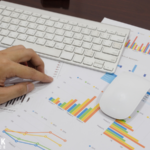Businesses across various sectors are increasingly leveraging advanced weather forecasting to enhance their planning strategies for the coming year. The use of predictive analytics in weather forecasting allows companies to better prepare for shifts in temperature and precipitation, which can significantly impact consumer behavior and operational logistics. By closely examining past weather data and its correlation with sales patterns, companies aim to mitigate risks associated with unexpected weather changes. This strategic approach is not only about anticipating weather events but also about aligning business operations to meet anticipated consumer needs efficiently.
What Drives Businesses to Utilize Weather Forecasting?
Economic impacts from weather are substantial, with climate-sensitive industries contributing significantly to GDP. As reported previously, fluctuations in weather patterns have led to billions of dollars in damages and significant disruptions to daily business operations. Recognizing these impacts, businesses are increasingly integrating long-term weather forecasts into their planning processes. This method is particularly useful for retailers and manufacturers of seasonal products, where inventory and promotional strategies are highly dependent on weather conditions. By anticipating these shifts, businesses can better align their resources and marketing efforts.
How Does Weather Influence Business Performance?
Weather conditions directly affect sales and inventory management, especially for seasonal products. For instance, colder temperatures have been linked to increased sales in products like coffee and apparel. This relationship highlights the importance of precise weather forecasting in making informed business decisions. Home Depot’s recent financial performance exemplifies the significant impact of weather conditions on sales figures. The company’s sales dropped due to unexpectedly wet conditions, illustrating the potential financial repercussions of unanticipated weather patterns. Enhanced forecasting can help businesses avoid such pitfalls by allowing for better preparedness.
In recent years, the rise of technology and data analytics has enabled a more sophisticated approach to weather forecasting. Companies like weathertrends360 are utilizing extensive datasets to predict weather trends with a high degree of accuracy. By examining historical weather data alongside point-of-sale information from retailers, these companies provide insights that help businesses adapt their strategies effectively. This approach goes beyond traditional meteorological methods, offering tailored forecasts that anticipate consumer behavior changes based on weather conditions.
While traditional forecasting methods primarily relied on meteorological data, modern techniques incorporate statistical models to provide more accurate predictions. Companies can now forecast weather-related sales trends and adjust their strategies accordingly. For example, energy consumption, automotive battery sales, and even the demand for specific clothing items can be predicted based on slight changes in temperature. This data-driven approach enables businesses to capitalize on weather-driven demand fluctuations, ensuring they meet consumer needs efficiently.
As businesses continue to refine their use of weather forecasting, the accuracy and reliability of such predictions remain a focal point. The upcoming Christmas week forecast by weathertrends360, predicting colder-than-average conditions, serves as a test case for the effectiveness of these advanced forecasting techniques. By providing businesses with actionable insights, weather forecasting is becoming an indispensable tool for strategic planning and risk management. The continuous evolution of forecasting methodologies promises to offer even more precise and valuable business insights in the future.










